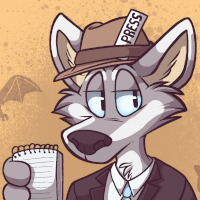The Stolen Guardian, by R. A. Meenan – Book Review By Fred Patten
by Patch O'Furr
Submitted by Fred Patten, Furry’s favorite historian and reviewer.
The Stolen Guardian, by R. A. Meenan.
Los Angeles, CA, Starcrest Fox Press, October 2015, trade paperback $10.99 (430 pages), Kindle $1.99.
“Ouranos crept through the dense green forest, following an overgrown path leading toward the sea. He scratched the black fur under the short quills that topped his head and bent a catlike ear back with a frown, his bare, clawed feet padding noiselessly on the dirt. His simple red clothes, while appropriate for his royal status, made him feel too conspicuous against the green of the trees. He chanced a glance behind him.” (p. 9)
Ouranos is a quilar from the planet Zyearth. This first paragraph shows that The Stolen Guardian, Book One of The Zyearth Chronicles, isn’t set on Earth, and that the lead characters are furry but not based on any Earth-evolved animals.
With Chapter 2, though, we get a space patrol team, still not on Earth; the Zyearth Defenders (whose top agents are the Golden Guardians), and they are just funny animals in spiffy uniforms.
“A tall gray stag with silver antlers in velvet stood in front of Matt with a manic look on his face and a pistol aimed at Matt’s snout.” (p. 38) – “A white wolf with thin glasses and dark yellow eyes appeared in the hologram. His face looked worried at first, but immediately relaxed with relief. Matt allowed himself a smile. Lance Tox, Master Guardian of the Defenders. He’d normally never make personal calls, but Matt could tell he had been concerned.” (p. 67)










